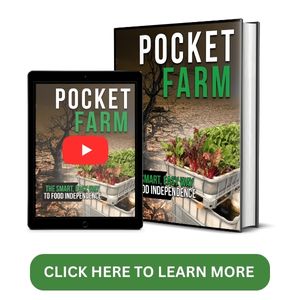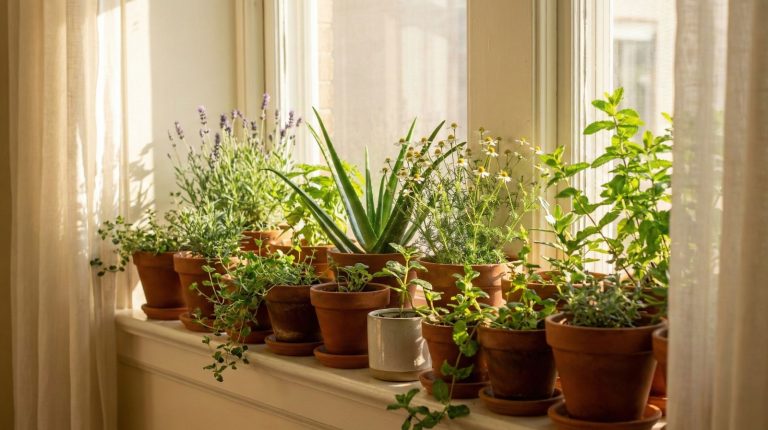Are you tired of relying on traditional farming methods that drain your resources and harm the environment? Look no further! In this article, we will introduce you to five innovative off-grid sustainable agriculture methods that will revolutionize your farming practices.
From hydroponics to vertical farming, aquaponics to permaculture, and agroforestry, these techniques will empower you to grow food in a way that is efficient, environmentally friendly, and self-sufficient.
Get ready to embark on a journey towards a greener and more sustainable future!

Hydroponics for Off-Grid Farming
You can use hydroponics as an efficient and sustainable method for off-grid farming. Hydroponics eliminates the need for traditional soil-based agriculture, making it ideal for off-grid locations with limited access to fertile land.
Off-grid irrigation systems, such as drip irrigation or nutrient film technique, can be integrated with hydroponics to ensure water efficiency.
By utilizing solar-powered hydroponics, you can further enhance sustainability by reducing reliance on external power sources. Solar panels can generate electricity to power pumps, lights, and other necessary equipment for hydroponic systems.
This combination of off-grid irrigation systems and solar-powered hydroponics offers a self-sufficient and environmentally friendly solution for growing crops in remote areas. It allows you to cultivate a variety of plants in a controlled environment, using less water and minimizing the impact on natural resources.
Vertical Farming Techniques
Implementing vertical farming techniques in off-grid agricultural systems can maximize space and optimize crop production. This method has several advantages, including higher crop yields per square meter of land compared to traditional farming methods. By stacking crops vertically, farmers can make the most of limited space and grow more crops in a smaller area. Additionally, vertical farming reduces the need for extensive land use, making it suitable for areas with limited arable land.
However, vertical farming does present its challenges. Maintaining a suitable microclimate, including temperature, humidity, and lighting, is crucial for successful vertical farming. This requires careful monitoring and management to ensure optimal growing conditions for the crops.
Another challenge is the initial investment required for setting up vertical farming systems. The cost of infrastructure, such as vertical structures, lighting systems, and climate control technology, can be high. However, with advancements in technology and increased awareness of the benefits of vertical farming, it is becoming an increasingly viable option for off-grid sustainable agriculture.
Aquaponics: Combining Fish and Plants
By combining fish and plants, aquaponics offers a sustainable and efficient method for off-grid agriculture. This innovative technique involves the symbiotic relationship between fish farming and plant cultivation.
Here’s how it works:
- Fish farming techniques:
- Choose fish species that are well-suited for aquaponics, such as tilapia or catfish.
- Maintain optimal water conditions for fish health, including proper temperature, pH levels, and oxygenation.
Nutrient cycling in aquaponics:
- Fish produce waste, which contains ammonia.
- Beneficial bacteria in the system convert the ammonia into nitrites and then nitrates, which serve as nutrients for plants.
- Plants uptake the nitrates, filtering the water and providing a clean environment for the fish.
Permaculture: Designing Sustainable Systems
To design sustainable systems in off-grid agriculture, it’s important to incorporate permaculture principles.
Permaculture is an approach to designing agricultural systems that mimic natural ecosystems, focusing on creating self-sustaining and regenerative systems.
The design principles of permaculture include observing and interacting with the environment, using and valuing renewable resources, integrating diverse elements, and creating small-scale intensive systems.
These principles guide the implementation of sustainable farming techniques such as agroforestry, polyculture, and water harvesting.
Agroforestry involves growing trees alongside crops or livestock, providing shade, windbreaks, and additional sources of income.
Polyculture involves planting multiple crops together, improving soil fertility, reducing pests, and increasing biodiversity.
Water harvesting techniques capture and store rainwater, reducing water runoff and increasing water availability for crops.
Agroforestry: Integrating Trees and Crops
Integrate trees and crops for a sustainable off-grid agricultural system. Agroforestry, the practice of integrating trees and crops, offers numerous benefits for sustainable farming. Here are some agroforestry techniques that can help you achieve a more sustainable and productive agricultural system:
- Alley cropping: Planting rows of trees alongside crops to provide shade, windbreaks, and nutrient cycling.
- Silvopasture: Combining trees with livestock grazing, creating a mutually beneficial system where trees provide shade and forage for animals.
- Windbreaks: Planting trees in rows to act as a barrier against strong winds, protecting crops from damage.
Agroforestry systems foster biodiversity, improve soil health, conserve water, and enhance carbon sequestration. By integrating trees and crops, you can create a resilient and sustainable farming system that benefits both the environment and your livelihood.
Embrace agroforestry techniques and reap the rewards of tree crop integration.

Conclusion
So why settle for traditional farming methods when there are innovative off-grid sustainable agriculture methods available? With hydroponics, vertical farming, aquaponics, permaculture, and agroforestry, you can cultivate crops and raise livestock in a more efficient and environmentally friendly way.
Imagine growing your own food without relying on external resources or damaging the ecosystem. Isn’t it time we embrace these sustainable farming techniques and pave the way for a greener future?




